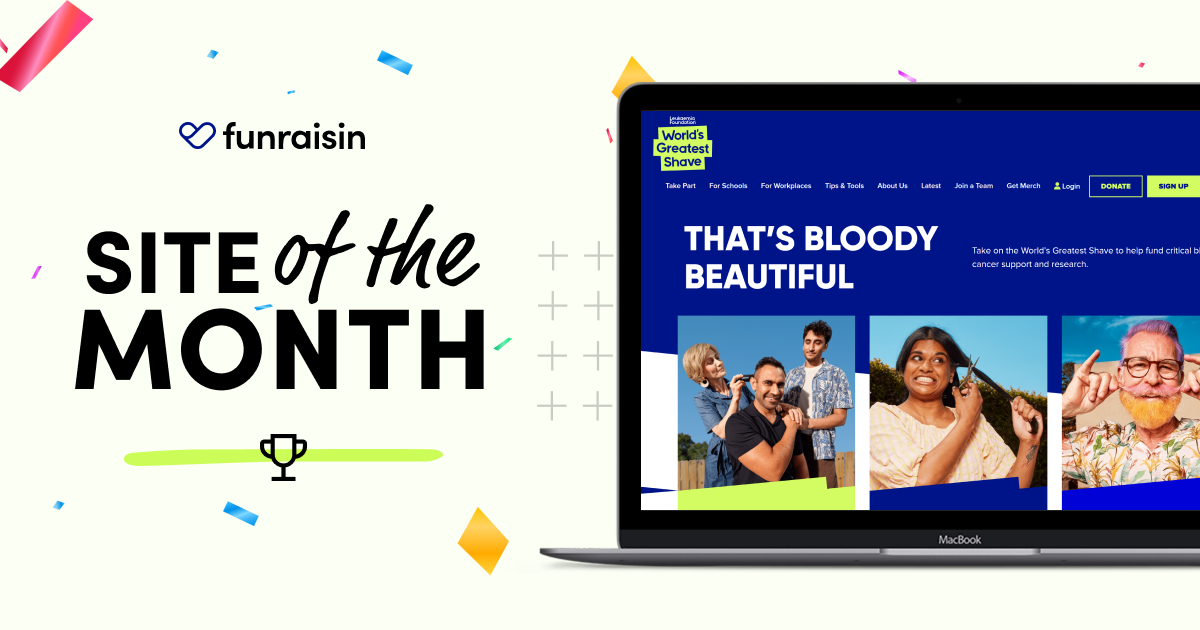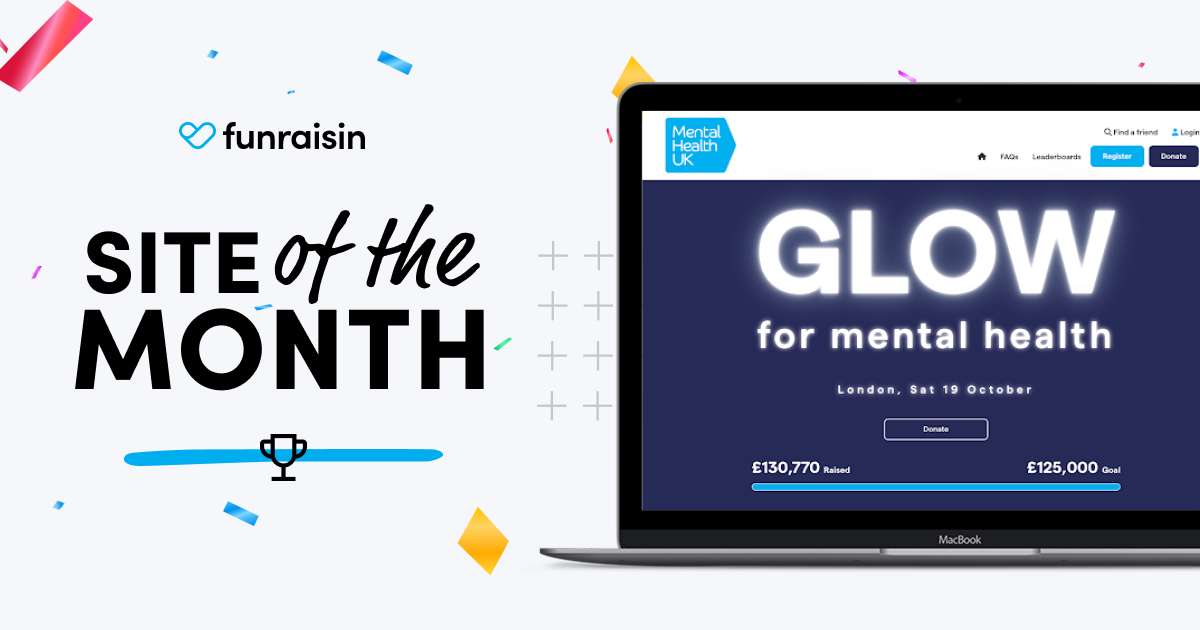Although Peer 2 Peer fundraising has been around for well over a decade now, you tend not to see any stats or guides specifically relating to Sponsored Donation form design. We've been fortunate to have been involved in leading P2P events since 2003 and we've put down some guides based on our experience into what makes a good Sponsored Donation form.
P2P donors usually have intent.
Unlike with traditional donation forms, we know that when someone comes to a Peer 2 Peer (P2P) fundraising page to make a donation, they most likely already have clear intent to make a donation since they generally arrive by personal invite, be it via personal email, SMS or a social post. In fact over 50% of sponsored donations happen within the the first visit and over 80% happen within the same day. Therefore the normal rules that apply to lead acquisition type (funnel) forms don't necessarily apply to sponsored donation forms.
Typically with a traditional e-commerce or donation process, the desired approach for form design is to hide all other paths and create a type of funnel ensuring that the transaction can take place as quickly as possible to ensure the transactor doesn't change their mind, but with the P2P process, since you already have intent these techniques simply aren't always needed.
It's all about fostering "their" relationship, not yours.
We know that a P2P donor has a relationship with the person they are about to sponsor and the charity behind the campaign generally takes second place and is not always even known to the potential donor, therefore it is vital that all communications re-enforce this relationship, right down to the form labels themselves, using labels more in the 3rd person rather than generic ones.
And since the donor already has this relationship with the fundraiser and has in most cases already made up their minds that they wish to make a donation, all they are really looking for is a safe, secure, error free and straight forward donation process, so based on this, nothing that you can do to a form other than normal best practice can really significantly increase the number of donations that you can get, therefore we feel you should focus on what you can control.
Some things that you can easily focus on.
If the majority of sponsored donations are already decided on when they arrive at your site then it makes sense to assume that the number of sponsored donations that you get is more directly related to the fundraiser's social network rather than page optimisation methods, so if you aren't in control of increasing the number of donations you get from page optimisation, maybe we should take a look at what you are in control of.
1. Make the donation process simple and error free
This obviously goes without saying, but just because the potential donor already has it in mind that they wish to sponsor their friend or family member, they are still looking for an enjoyable stress free donation process, so any hurdles will not only most likely lose the donation but the bad news will get back to the fundraiser who will be equally disappointed with you, so you risk upsetting 2 people.
2. Allow the donor to personalise their donation, or remain anonymous
On average, just over 70% of all sponsored donations leave a personalised message for the Fundraiser and around 10% of sponsored donors wish to remain anonymous.
Digging a little further, our stats indicate that on average, a fundraiser that receives personalised donations raises around twice as much as a fundraiser who receives donations that don't have personalised messages.
Recently we heard of a case where a donor didn't donate because they couldn't see that they had the ability to leave a message to their friend (it was on the next step in the donation process). I think we all need to keep in mind that in the sponsored donor's mind, they are donating to the friend or family member, not the charity.
3. Allow the donor to choose from a suggested amount coming from the fundraiser themselves
Dollar handles can be a great way to lift the average donation amount through suggestion, but when using dollar handles for suggested donation amounts, try to provide the copy as if it is from the Fundraiser themselves suggesting what it can go towards rather than from the charity.
Rather than having a bunch of dollar handles like $50, $100, $150 $200, try shifting the language to be more like "Sponsor me $50 to help Fred Hollows provide eyesight for 1 child in need"
4. Allow the donor, or incentivise them, to share their donation with their friend's (and most likely the fundraiser's own) social networks
Consider the type of event you're running and the demographics of the fundraisers. Incorporate the ability for sponsored donors to share via SMS, WhatsApp and LinkedIn... 3 of the built-in channels we see as driving social traffic from shares.
5. Follow up with a personalised thank you from the Fundraiser & a structured thank you from the charity.
Recognition is obviously a vital element of any donation process. Doing something good is proven to provide us with a boost of Serotonin that then makes us feel happy, and it's been proven that there are types of donors that donate regularly because of this, so a correctly timed thank you message is a great way to capitalise on this happiness.
Allow the fundraiser to craft their own personal thank you message that gets displayed to the donor immediately after donating. Also immediately alert the fundraiser to their new donation from their friend or family member and again allow them to send a more personalised thank you message and finally follow up with a slightly more structured thank you from the charity.
Once a donor has made their sponsored donation to their friend or family member, this really is when the message can be enforced as to what their donation to their friend really can achieve. Educate them on what their friend most likely already knows and why they have asked them to donate in the first place.
Too many times we see the thank you page forgotten about and a follow up email sent post campaign when it really is too late for the donor as they have most likely well forgotten about their donation by then.

When designing your P2P donation forms it's important to keep these do's and dont's in mind.
Although there is often an intent from the donor to make a donation to their friend or family member, there are still basic form best practices that you need to keep in mind when laying out your actual donation forms.
1. Don't ask for too much information or make too many fields mandatory.
There may be clear intent to donate, but asking for too much information is still an easy way to lose a potential donation.
2. Do minimise visible form fields until needed.
If you want to ask for an address, just use a single field with a Google lookup rather than display fields for every component of an address.
3. Do re-enforce who the donation is connected to, as in the fundraiser.
During the donation flow, use the fundraiser's name more so than your organisation, who the funds are actually going to. For example "Your donation of means is ".
4. Don't take them to a separate page with just a standard donation process
Try to retain visual cues relating to the fundraiser like profile pics, targets, amounts raised so far, etc
5. Do personalise field labels when possible to again re-enforce that the donation is connected to your friend or family member
The follow up is an ideal opportunity to work on your relationship.








